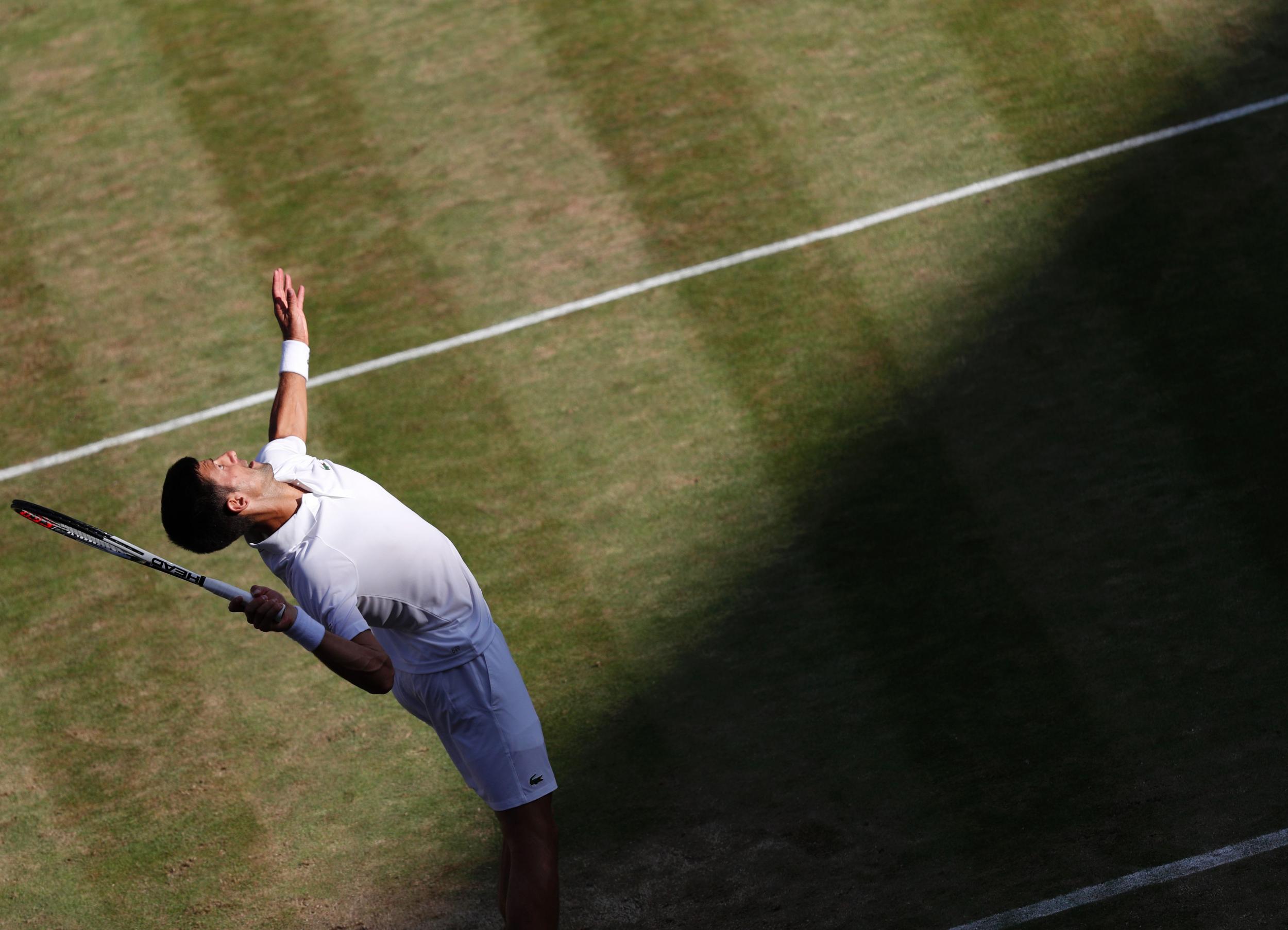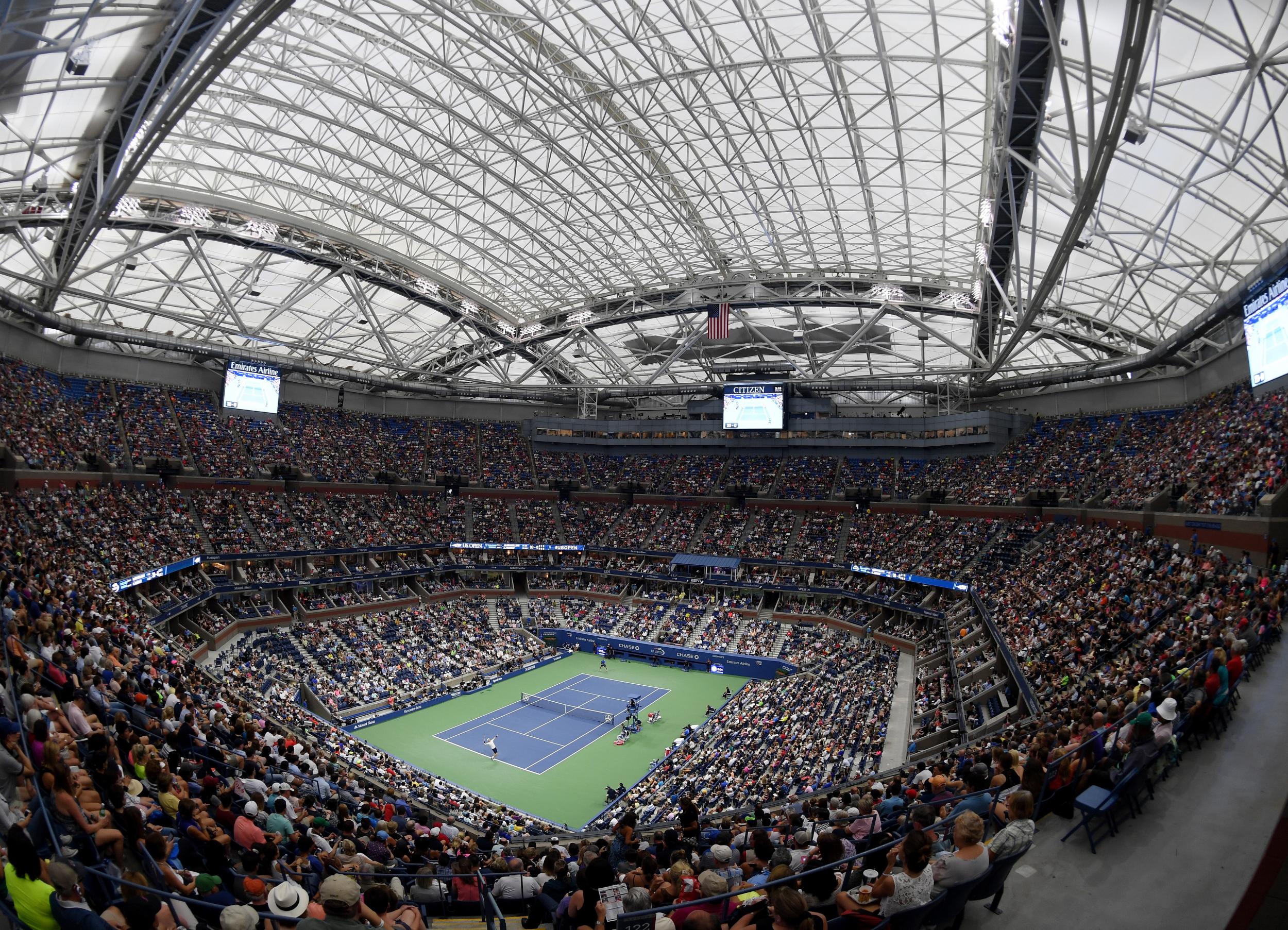Wimbledon 2017: Novak Djokovic in favour of tennis players wearing wireless headsets to receive on court coaching
Unlike Roger Federer, Djokovic is in favour of players receiving on court coaching

Your support helps us to tell the story
From reproductive rights to climate change to Big Tech, The Independent is on the ground when the story is developing. Whether it's investigating the financials of Elon Musk's pro-Trump PAC or producing our latest documentary, 'The A Word', which shines a light on the American women fighting for reproductive rights, we know how important it is to parse out the facts from the messaging.
At such a critical moment in US history, we need reporters on the ground. Your donation allows us to keep sending journalists to speak to both sides of the story.
The Independent is trusted by Americans across the entire political spectrum. And unlike many other quality news outlets, we choose not to lock Americans out of our reporting and analysis with paywalls. We believe quality journalism should be available to everyone, paid for by those who can afford it.
Your support makes all the difference.Former World No 1 Novak Djokovic has said that he would support a rule change in tennis allowing players to wear wireless headsets while on court to receive coaching advice.
Last week it was announced that The US Open will this year experiment during its qualifying rounds with scoreboard clocks, to limit how much time elapses between points and how long pre-match warmups or mid-match clothing changes can last.
The fourth Grand Slam tournament of the season will also experiment with allowing coaches to communicate with their players from the stands in between points.
Coaching has long been barred during matches at Grand Slam tournaments, although the WTA does permit coaches go to the sideline to speak to players during breaks in the action at tour events.
And Djokovic, a 12-time Grand Slam champion and former World No 1, has said that he is in favour of players being able to receive advice from their coaches during matches.
“When the WTA introduced on-court coaching, many ATP players were not really positive about it. But I thought it was a good move for the sport,” Djokovic said while playing at Wimbledon this week.
“Certainly in certain situations you can disrupt the opponent, yes, no. But in general, I think, if you have a coach, why not try to use him during the match itself?
“I mean, we're probably one of the only, maybe only global sport that doesn't use coaching during the play. Even golf, individual sport, you have caddies that you communicate with throughout the entire course. So why not here as well?”
Djokovic also said he would be in favour of players wearing small wireless headsets which would allow them to better communicate with their coaches throughout the match.
“The headset I think would be fine,” he added. “This is kind of an intimate conversation where you feel comfortable that you communicate wirelessly with your coach who is there. I think it is also a good idea for the commercial part. Obviously there's a lot of headset companies that would probably include their budget into tennis, which is always great.
“But I don't know. They've said that the TV audience possibly could hear what you were speaking with your player. Still have to be a bit careful.”

Not all players are in favour of on court coaching, however. Many feel it would unnecessarily slow the sport down, while others have said it detracts from the sport’s emphasis on self-reliance.
“I'm not all for it,” Roger Federer said last week. “I find it kind of cool that in tennis, you know, you're sort of on your own out there. Not everybody has the same amount of resources for coaching, as well. So I'm not sure if it's that beneficial.”
And Djokovic did concede that, should on court coaching be rolled out at all four Grand Slams, the chair umpire would have to be vigilant to ensure that the coaching sessions did not slow down play too much.
“Yes it has to be within acceptable time, so to say, limit because the rules, the server is dictating the time between the points,” he said.
“It's on the chair umpire basically to judge whether it's too long or too short. But they said around seven to ten seconds is somewhere an average which is acceptable to have between the points. It's the time where a coach can interact, communicate with his player.”
Join our commenting forum
Join thought-provoking conversations, follow other Independent readers and see their replies
Comments